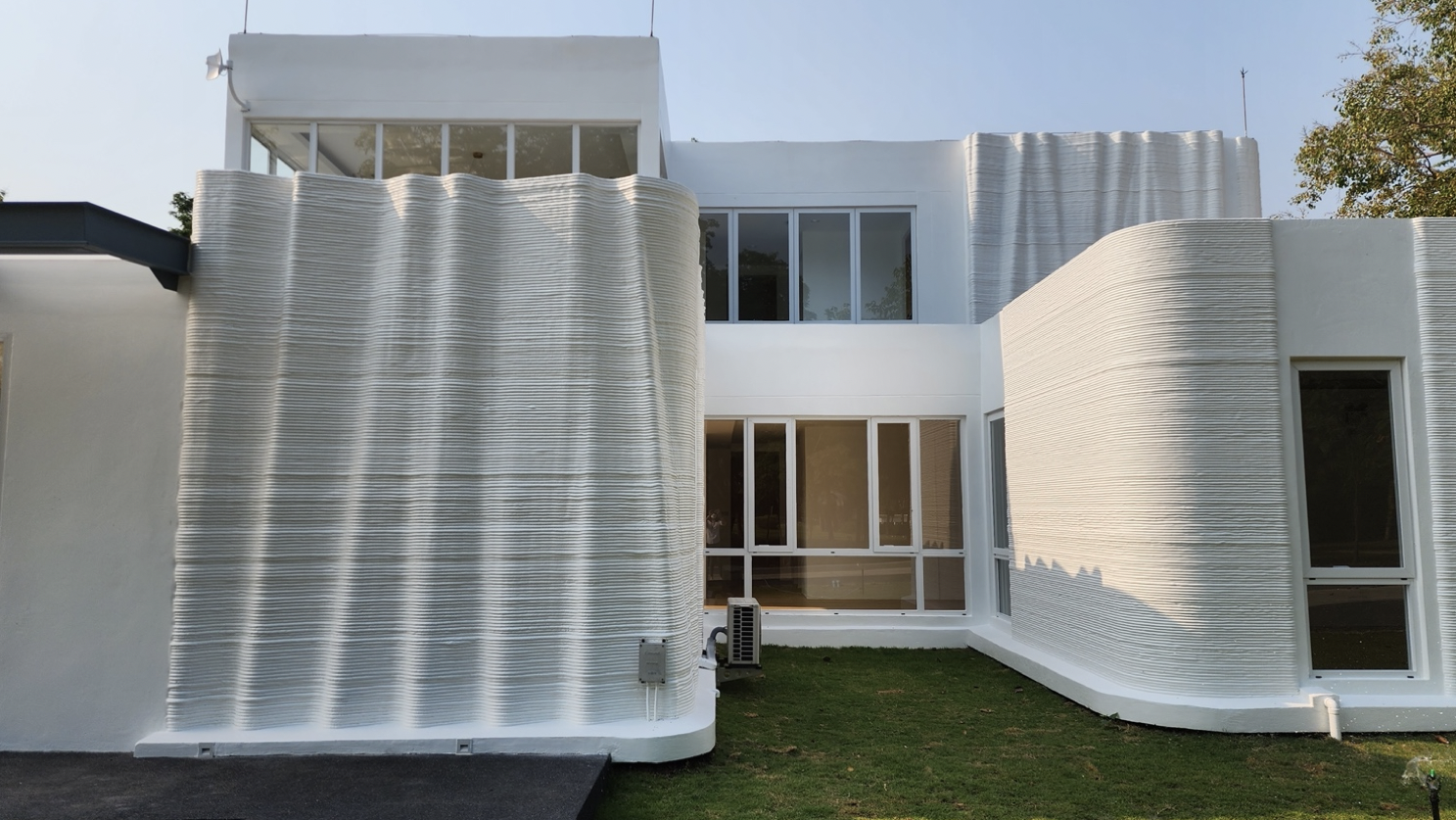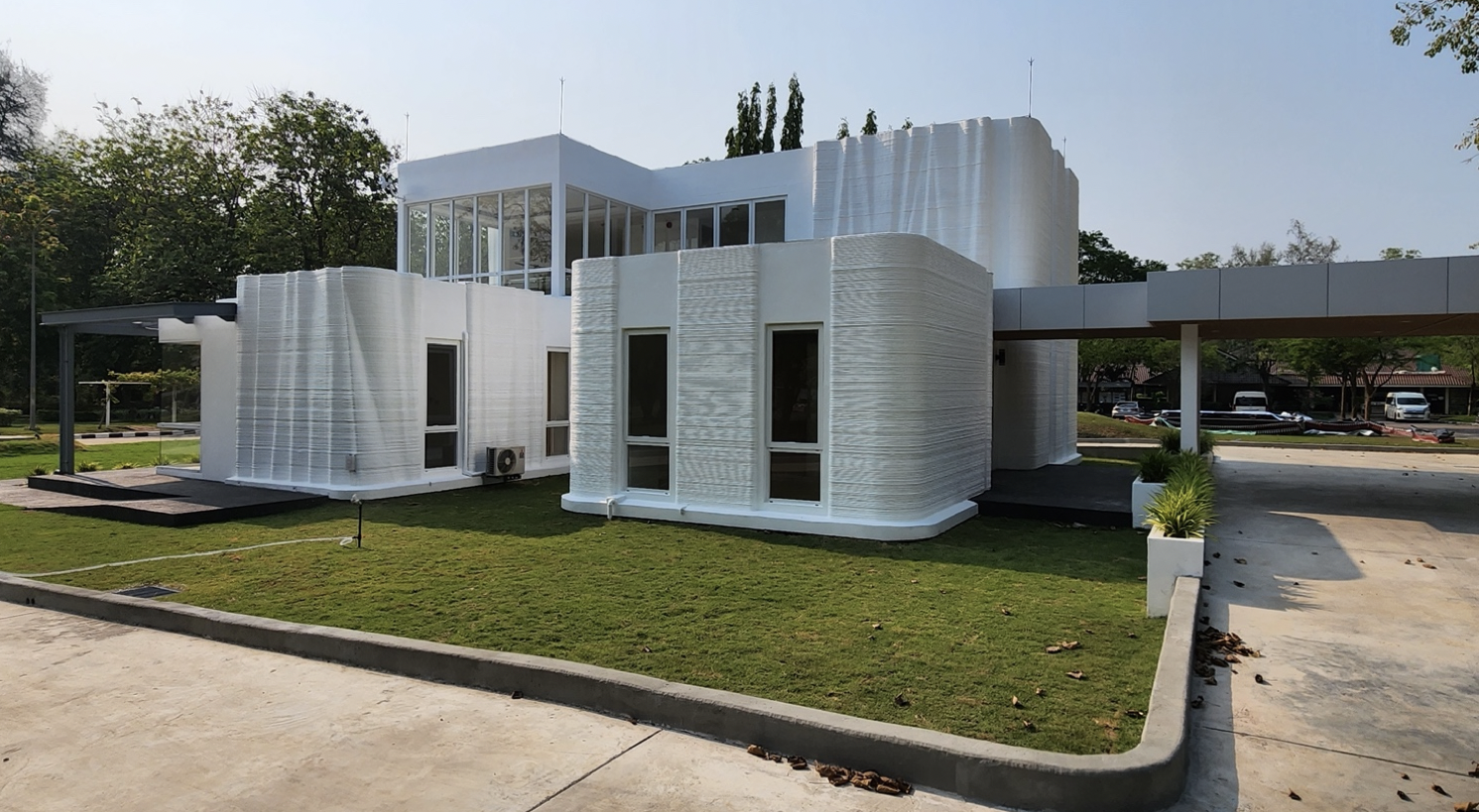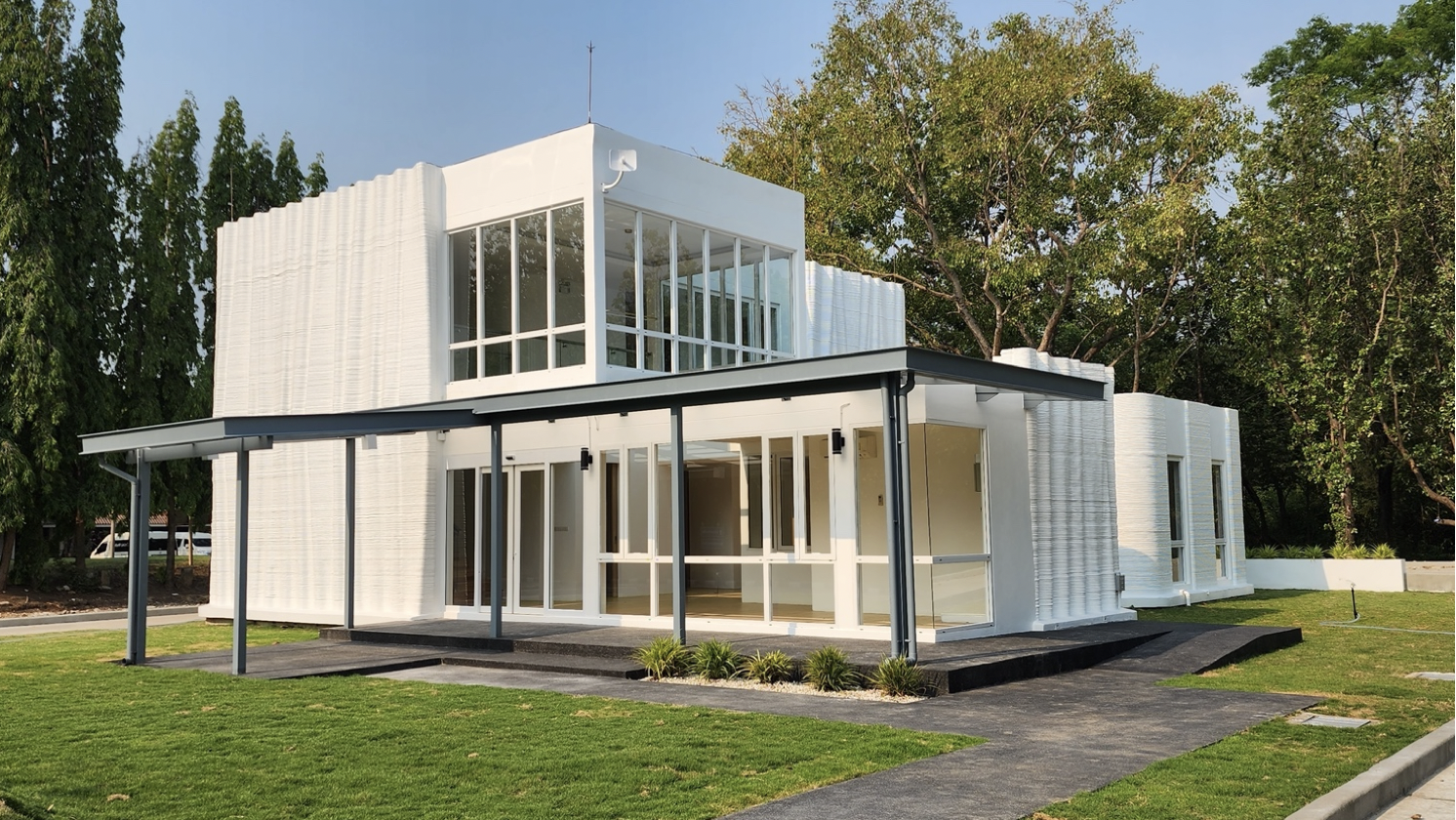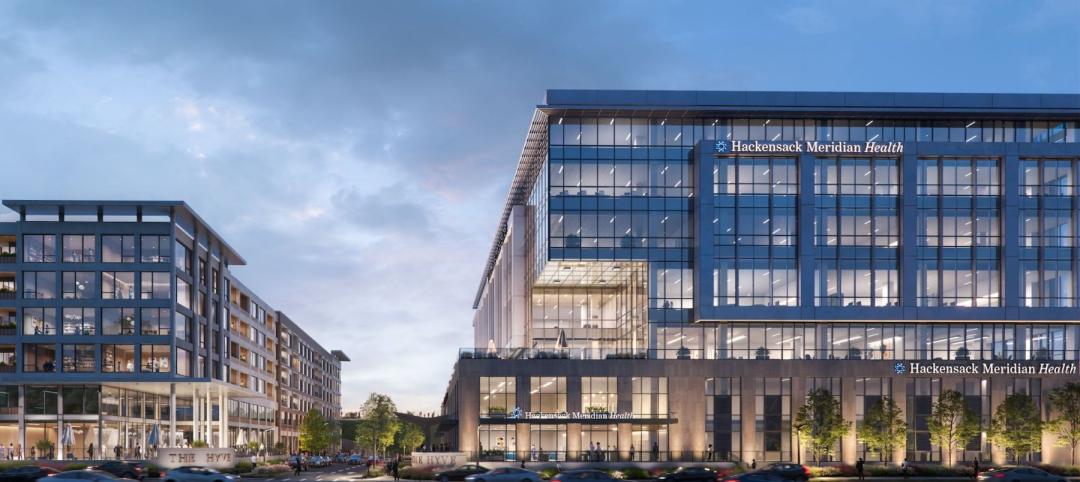3D construction printing reached new heights this week as the world’s first 3D-printed medical center was completed in Thailand. Often associated with residential homebuilding, 3D construction printing (3DCP) is an industry innovation that aims to build homes faster, cheaper, and stronger.
The recently finished medical center in Saraburi, Thailand, spans 3,712 sf and is two stories tall—the first two story 3D-printed building in the ASEAN countries. The medical center was built by Siam Cement Group (SCG), the largest and the oldest cement and building material company in Thailand and Southeast Asia.
Building the world’s first 3D-printed medical center
Using a BOD2 3D concrete printer from COBOD, the medical center bears a familiar wavy-wall design often seen in many 3D-printed structures. This building was specifically designed to support seismic loads as well. Due to the method of 3DCP, SCG was able to build the center at an increased speed with less labor required compared to conventional building methods.

The success of the Saraburi medical center was supported by SCG’s collaborative studies with Thailand universities. Chalermwut Snguanyat, 3D Printing and Fabric Concrete Technology Director from SCG, notes that the design of the 3D-printed medical center was approved by a senior professional engineer, and the materials used were SCG printing mortars with strength classes of C75/80 and C30/35 for load-bearing and non-load-bearing walls, respectively.
According to SCG, the building’s freeform design stands out for “only being possible due to the use of 3D construction printing.”
As an official distributor of COBOD in Thailand, SCG aims to continue increasing construction efficiencies, improving design, and reducing the environmental footprint by generating less waste on the construction site.

RELATED:
- 3D printing for construction advances in Germany
- Montana becomes first U.S. state to approve 3D printing in construction
- Will 3D printing be an answer for building more affordable homes?
Related Stories
Sports and Recreational Facilities | Mar 14, 2024
First-of-its-kind sports and rehabilitation clinic combines training gym and healing spa
Parker Performance Institute in Frisco, Texas, is billed as a first-of-its-kind sports and rehabilitation clinic where students, specialized clinicians, and chiropractic professionals apply neuroscience to physical rehabilitation.
Healthcare Facilities | Mar 7, 2024
A healthcare facility in New Jersey will be located at a transit station
The project is part of a larger objective to make transportation hubs more multipurpose.
University Buildings | Feb 21, 2024
University design to help meet the demand for health professionals
Virginia Commonwealth University is a Page client, and the Dean of the College of Health Professions took time to talk about a pressing healthcare industry need that schools—and architects—can help address.
Hospital Design Trends | Feb 14, 2024
Plans for a massive research hospital in Dallas anticipates need for child healthcare
Children’s Health and the UT Southwestern Medical Center have unveiled their plans for a new $5 billion pediatric health campus and research hospital on more than 33 acres within Dallas’ Southwestern Medical District.
Healthcare Facilities | Feb 6, 2024
New surgical tower enhances healthcare services of a Long Island, N.Y., hospital
The eight-story Petrocelli Surgical Pavilion includes 132 intensive care rooms.
Standards | Feb 1, 2024
Prioritizing water quality with the WELL Building Standard
In this edition of Building WELLness, DC WELL Accredited Professionals Hannah Arthur and Alex Kircher highlight an important item of the WELL Building Standard: water.
Industry Research | Jan 23, 2024
Leading economists forecast 4% growth in construction spending for nonresidential buildings in 2024
Spending on nonresidential buildings will see a modest 4% increase in 2024, after increasing by more than 20% last year according to The American Institute of Architects’ latest Consensus Construction Forecast. The pace will slow to just over 1% growth in 2025, a marked difference from the strong performance in 2023.
Giants 400 | Jan 23, 2024
Top 70 Medical Office Building Construction Firms for 2023
PCL Construction Enterprises, Swinerton, Skanska USA, Clark Group, and Hensel Phelps top BD+C's ranking of the nation's largest medical office building general contractors and construction management (CM) firms for 2023, as reported in the 2023 Giants 400 Report.
Giants 400 | Jan 23, 2024
Top 50 Medical Office Building Engineering Firms for 2023
Jacobs, Salas O'Brien, KPFF Consulting Engineers, IMEG, and Kimley-Horn head BD+C's ranking of the nation's largest medical office building engineering and engineering/architecture (EA) firms for 2023, as reported in the 2023 Giants 400 Report.
Giants 400 | Jan 23, 2024
Top 110 Medical Office Building Architecture Firms for 2023
SmithGroup, CannonDesign, E4H Environments for Health Architecture, and Perkins Eastman top BD+C's ranking of the nation's largest medical office building architecture and architecture engineering (AE) firms for 2023, as reported in the 2023 Giants 400 Report.
















